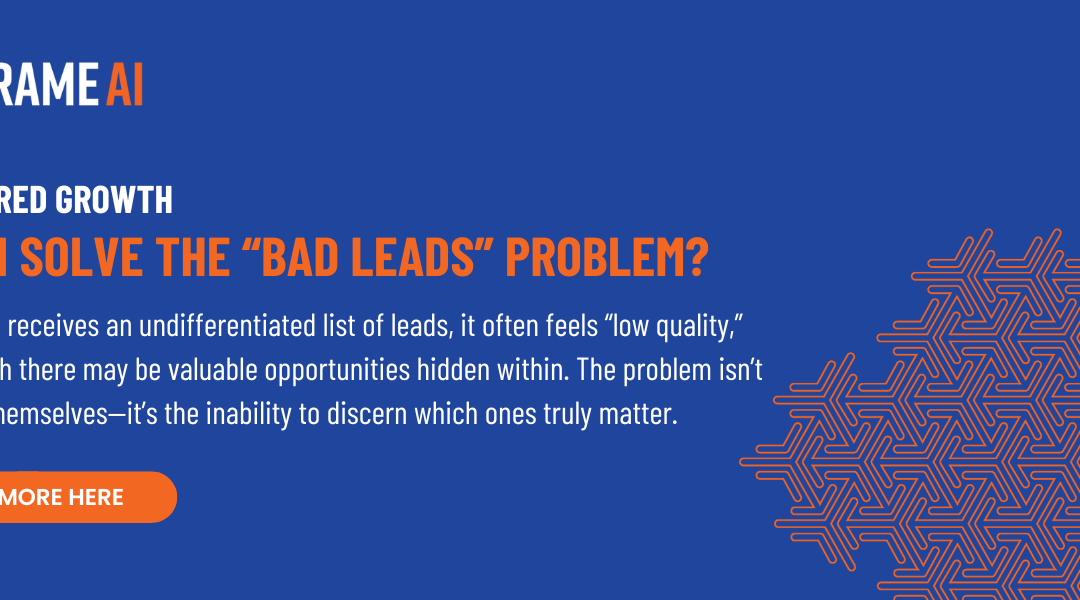Your Support team is probably busy — well, busy is not quite a strong enough word. Swamped? Overwhelmed? Drowning? You get the idea. There are simply not enough hours in the day, or people in your most important roles, to make it all the way through your queue —or at least not at a level that satisfies and even delights your customers without burning out your team and sending your cost of service through the roof.
And that’s the critical issue for Support teams — how to get more time back on the time-consuming, repetitive, low-value tasks so your employees can do more for your customers. According to Zendesk, 70% of organizations see a direct connection between customer service and business performance, so imagine what your team could accomplish for the organization if you could free up some time.
But there’s hope! With the right AI and automation tools, you can reduce ticket volume for your Support team, allowing them to prioritize the tasks where their skills are truly needed and to be human and present with customers. AI can take care of the rest.
How exactly can AI help you reduce support ticket volume without affecting service quality? Or without making support interactions less human? Here are the three top ways you should consider incorporating AI to manage ticket volume and reduce your backlog…
1. Find Easy and Repetitive Tasks
One of the best jobs for AI is uncovering all of the easiest problems your customers create support tickets to solve, based on how long they take.
Running a theme detection analysis using natural language AI can help you pull out the support ticket themes that are resolved fastest. These topics are likely very simple (since they’re so easy to resolve), and are probably just taking up time from your team when a customer could solve it themselves, given the right resources.
Once you know what these topics are, you can create self-serve resources for your customers when they come to your support agents or chatbot with those questions. They get a super-fast answer, and your team gets reduced ticket volume — a real win-win.
You might think you know what these quick, easy questions are — but there are likely at least a few hidden ones AI can help you find. And if you can create self-serve resources for just a couple of small, simple tasks that customers ask about fairly regularly, you can save your team’s time to spend answering questions where their expertise is truly needed. And the time (and cost) savings add up quickly!
Of course, this doesn’t take the place of a thoughtful and comprehensive knowledge base — that’s also important to create for your customers, especially the ones who want to find the answers themselves.
But half the battle in developing an effective knowledge base is determining what kind of content you need. And a great AI-based ticket analysis system can help you determine what knowledge base content you should create by alerting you to the simple, frequent questions your customers have. If your AI tells you that customers are asking about how to export data dozens of times a day, and all they need is a concise, clearly explained article about it, you can eliminate most or all of the ticket volume coming from that request.
Your Support team is probably busy — well, busy is not quite a strong enough word. Swamped? Overwhelmed? Drowning? You get the idea. There are simply not enough hours in the day, or people in your most important roles, to make it all the way through your queue —or at least not at a level that satisfies and even delights your customers without burning out your team and sending your cost of service through the roof.
And that’s the critical issue for Support teams — how to get more time back on the time-consuming, repetitive, low-value tasks so your employees can do more for your customers. According to Zendesk, 70% of organizations see a direct connection between customer service and business performance, so imagine what your team could accomplish for the organization if you could free up some time.
But there’s hope! With the right AI and automation tools, you can reduce ticket volume for your Support team, allowing them to prioritize the tasks where their skills are truly needed and to be human and present with customers. AI can take care of the rest.
How exactly can AI help you reduce support ticket volume without affecting service quality? Or without making support interactions less human? Here are the three top ways you should consider incorporating AI to manage ticket volume and reduce your backlog…
1. Find Easy and Repetitive Tasks
One of the best jobs for AI is uncovering all of the easiest problems your customers create support tickets to solve, based on how long they take.
Running a theme detection analysis using natural language AI can help you pull out the support ticket themes that are resolved fastest. These topics are likely very simple (since they’re so easy to resolve), and are probably just taking up time from your team when a customer could solve it themselves, given the right resources.
Once you know what these topics are, you can create self-serve resources for your customers when they come to your support agents or chatbot with those questions. They get a super-fast answer, and your team gets reduced ticket volume — a real win-win.
You might think you know what these quick, easy questions are — but there are likely at least a few hidden ones AI can help you find. And if you can create self-serve resources for just a couple of small, simple tasks that customers ask about fairly regularly, you can save your team’s time to spend answering questions where their expertise is truly needed. And the time (and cost) savings add up quickly!
Of course, this doesn’t take the place of a thoughtful and comprehensive knowledge base — that’s also important to create for your customers, especially the ones who want to find the answers themselves.
But half the battle in developing an effective knowledge base is determining what kind of content you need. And a great AI-based ticket analysis system can help you determine what knowledge base content you should create by alerting you to the simple, frequent questions your customers have. If your AI tells you that customers are asking about how to export data dozens of times a day, and all they need is a concise, clearly explained article about it, you can eliminate most or all of the ticket volume coming from that request.
2. Find Difficult and Time-Consuming Tasks
On the other end of the spectrum, natural language AI can also help you identify the hardest and most time-consuming tasks your team handles. Putting your finger on your team’s biggest time drains can help you to advocate effectively for a real solution instead of settling for band-aids or facing the “what’s the business case?” push-back again.
Well, guess what? If you can quantify how long certain issues take to fix, how often they occur, and present that in terms of service cost, you’ve got yourself an easy business case.
What does this look like in practice?
Let’s say your Support team has dealt with reporting bugs for months. Your agents are getting frustrated because this feature just keeps yielding bugs and problems for customers, who call in regularly for time-consuming troubleshooting.
But when you bring up the problem with the Product team, telling them “issues with this feature are taking up a lot of time and need to be fixed,” they’re busy as well. So they just don’t get around to fixing it.
With the right AI tool, on the other hand, you can gather hard data about exactly how often this problem occurs and the impact it’s having on your team. You can even quantify how it’s affecting customer satisfaction and retention.
It’s much easier to get a fix from your Product team if you can go to them and say: “issues with this feature have resulted in 25 tickets in the last week, taken 50 hours for our team to solve, and dropped customer satisfaction by 18%.” That’s powerful — and it’s sure to get your Product team’s attention fast.
Creating a path to faster solutions for the most time-consuming issues for your Support team frees them up to work on other problems, reducing your overall ticket volume.
And it has the added benefit of improving the customer experience as well — everybody wins here!
3. Automatically Route Tickets
Once you’ve shuttled the lowest-lift tasks to a self-serve model, and fixed the largest ones at the source, you’re left with the most important tickets — the ones customers truly need your team to assist them with. And there’s a way to further reduce your ticket volume here by using AI to automatically route tickets to the right person, right away.
Automatic routing helps make ticket volume more manageable in a few ways.
First, it reduces resolution time by directing each issue immediately to the person most qualified to deal with it, instead of waiting for the ticket to change hands enough times that it frustrates your customers and costs way more of your team’s time. This reduces transit time as well as the total time that the ticket is open.
Automated routing lessens team effort and speeds up resolutions, which means your team can handle more tickets with the same amount of staff. Faster time to resolution also improves the customer experience as an added bonus.
And it improves the customer experience further by sending tickets directly where they need to go the first time instead of bouncing a customer around from department to department. We’ve all been on a customer service call where that happens — and it’s frustrating for everyone involved.
Natural language AI tools like Frame AI can even route tickets based on business impact instead of using the “first-in first-out” method so your Support team can fix the most critical issues first. Reducing transit time and speeding up time to resolution means that your typical open ticket load is lower, while you’re also closing tickets faster. And the customers with the most pressing problems get the super-fast help they need. Customers are happy, and your Support team is set up for success.
How to Incorporate AI Into Your Support Operations
Fears that AI will replace human Support teams have been around for a while — but it’s not an issue of one or the other. AI and humans can work together to improve the customer experience and provide great support.
In fact, AI automation can help make customer experience more human. AI can help your team identify the biggest and smallest problems and route tickets to the right people. And your people can tackle the root causes of those issues, provide thoughtful and tailored support to customers when they really need it, and deliver the most important solutions that only come from experienced, dedicated humans.
An added benefit AI brings, in addition to lower ticket volume, is an improved customer experience. Reducing ticket volume also leads to better CX, of course, but so does reducing time to resolution, providing self-serve options where appropriate, and fixing issues at the root before customers even encounter them. In a world where CX is increasingly the top priority for both customers and businesses, these improvements can make a big impact.
But the best results will come from using the right AI tools to deliver better experiences for customers and employees alike.
A comprehensive support intelligence platform, like Frame AI, does more than simply point customers to existing self-serve resources. It helps you identify CX trends that are helping or hurting your business, unlock “why,” and track progress against your CX goals — whether that’s increasing CSAT, reducing service cost, or both.




